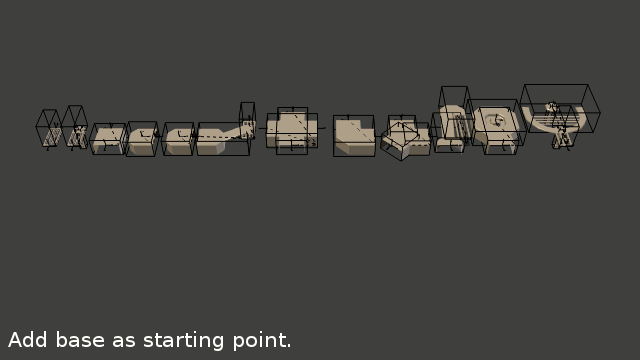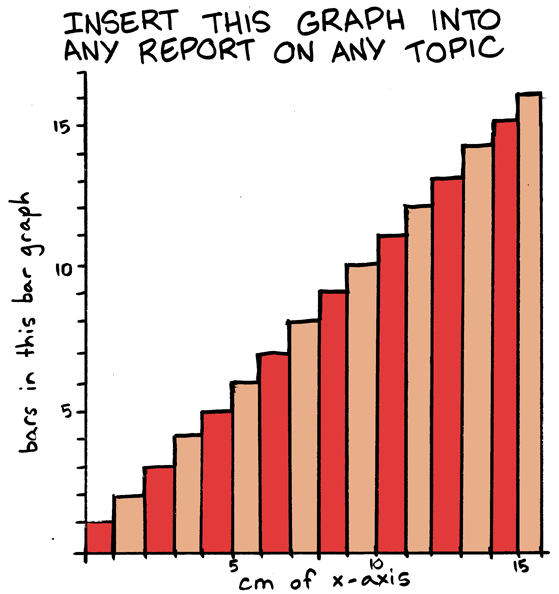Picking up where my last entry left off: Once I had the basic ingredients for an adjustable bridge whose segments could change angle and length, the next task was to give these to an algorithm and have it use these features to construct a bridge of whatever shape and size would be needed.
Computers, and in turn algorithms they run, are fundamentally mathematical objects and thus - sigh - I resigned myself to digesting a heavy serving of math, specifically trigonometry in this case. Each end of the bridge would be a segment that had to face a particular direction - that of whatever connected to the bridge at that end (e.g. one of a pair of doors). Thus, in mathematical terms, each end comprised a point in space (I was only worrying about two dimensions at this point) and a direction vector which had to be followed for at least the length of one bridge segment. By combining these direction vectors with a line connecting the two points, I could create one side and two angles. My task, therefore, reduced to its most basic mathematical formulation, was to complete a triangle given these ingredients, a situation often denoted as "ASA" for "Angle, Side, Angle" in academic settings:
Having drawn this triangle, I considered how I would use curved segments to accomplish the change in direction. I couldn't rely on a single corner to do this, because any curved segments would change their overall lengths as their curvatures were adjusted, and I had set them up in such a way that they could be constructed with various shapes and amounts of curvature. If I started building a curve at one end, by the time that curve was in alignment with the direction needed on other end, the end of the curve would very likely be out of alignment with the position of the other end such that a straight segment couldn't properly connect them.
Fortunately there was a way out! Curves facing opposite directions had the potential to cancel out these offsets in position if they curved by the same amount. In other words, if I split the curved part of the bridge into two halves, an isosceles triangle, having two corners that have the same angle, would permit me great freedom in how the curves were actually shaped while maintaining the certainty that the ends of the curves could line up with both ends of the bridge. In the above image, triangle ACD is an isosceles triangle, in which the exact angles are unknown but angles b and c are known to equal each other. Thus, if I could find point D, I could simply build a bridge connecting A to D and then easily connect that bridge to B using only straight segments.
After doing some calculations using Al-Kashi's Law of Cosines, I was able to find places to put the curved parts of the bridge and then align them with the end points and with each other:
Because the two curved segments curve the same amount in opposite directions, the offsets that occur at their end points cancel out and thus they are in alignment with each other. So far I've only experimented with a single pair of curved segments; but the system is designed with the concept of chaining multiple curved segments together in mind, in case individual curved segments are unable to curve far enough to achieve a full alignment on their own.
Now it's a matter of repeatedly spawning straight segments in the gaps to fill them in. This process makes use of the same Node Attachment system I implemented before that was used for manually constructing and later automatically generating levels. To minimize complexity for the sake of performance, first a series of straight segments is attached, continuing until the remaining gap is within the extension range of a single telescoping segment.
In the first draft of this system, only one type of "normal" straight segment was included, but recently I have implemented an array of segment templates from which to choose. The system iterates through this array, sorted from the longest template to the shortest, until it finds one that fits in the remaining gap without extending too far; thus the final bridge ends up being built out of significantly fewer total segments, which should improve performance overall.
Now that a single telescoping segment can span the remaining gap, it is inserted and its length is adjusted to match the remaining distance:
 |
| The telescoping segment consists of a base (red) and an extended section (yellow), which slides in or out to match the desired total extension distance. |
The second gap is then filled in the same manner as the first:
 |
| Diagram of the full construction process. For clarity I have shrunk the visual models of the segments slightly to create small gaps. |
This system has served my purposes quite well so far, and I have compiled an interactive demo which is available on my itch.io page. In the demo the bridge construction process is set up as a coroutine with a small delay so that one can watch the bridge form.
It does have some constraints, though. It can only build bridges if the triangle depicted above can be formed, i.e. some point exists in between the two end pieces toward which both pieces are pointing (point C, even though point C itself is not directly used in the calculations). If, say, both ends are pointing toward one another but offset by some amount so that the bridge would have to curve in two directions (a sort of "S" shape), a bridge is not formed. Also, naturally, a bridge cannot be formed if the end points are facing away from one another. In the future, it should be possible to address either of these situations, if needed, by chaining two or more bridges together.
The ability this system provides to connect arbitrary locations (if they meet the aforementioned constraints) is valuable for both the 3D chunk system I discussed (for connecting doors between neighboring chunks) and the level generator I discussed before that (for creating closed loops). My goal is eventually to have all three of these work together to create a system capable of generating a limitless interconnected network of traversible spaces. I expect it to be just as complicated and difficult as it sounds, and I look forward to sharing many more of my adventures along the way.




















































